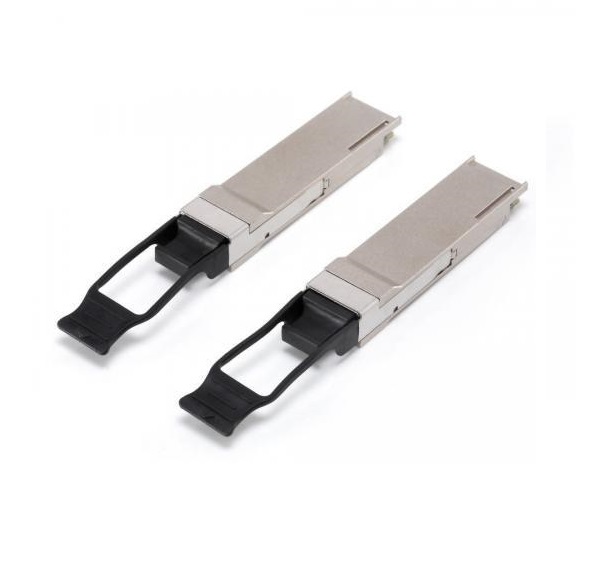- Sales SupportContact Sales
- Call us at: +(86) 15211074652
- Send us a email at: info@zr-fibercable.com
A Quick View of CVR-QSFP-SFP10G
The CVR-QSFP-SFP10G is a Cisco adapter module that allows for the conversion between QSFP+ (Quad Small Form-factor Pluggable Plus) and SFP+ (Small Form-factor Pluggable Plus) interfaces. In this quick view, we will provide an overview of the CVR-QSFP-SFP10G module, its functionality, compatibility, and common use cases.
Overview:
The CVR-QSFP-SFP10G is a hot-pluggable module designed to enable the connectivity between devices equipped with QSFP+ and SFP+ interfaces. It serves as an adapter, converting the physical interface of one form-factor to the other, allowing for seamless integration and interoperability between QSFP+ and SFP+ devices.
Functionality:
The CVR-QSFP-SFP10G module provides a straightforward solution for connecting QSFP+ ports to SFP+ ports. By utilizing the module, users can take advantage of the versatility and flexibility offered by both QSFP+ and SFP+ interfaces within their network infrastructure.
Compatibility:
The CVR-QSFP-SFP10G module is primarily compatible with Cisco networking equipment, including switches and routers, that support QSFP+ and SFP+ interfaces. It allows for the interconnection of various Cisco devices with differing form-factor requirements, enabling seamless communication and data transfer.

Use Cases:
The CVR-QSFP-SFP10G module has several common use cases, including:
a. Network Transition: In scenarios where network upgrades or migrations are taking place, the CVR-QSFP-SFP10G module can be employed to facilitate the transition from QSFP+ to SFP+ or vice versa without requiring significant infrastructure changes. This allows for a smoother migration process while preserving existing investments in networking equipment.
b. Interoperability: The CVR-QSFP-SFP10G module enables interoperability between devices with QSFP+ and SFP+ interfaces, expanding connectivity options and promoting compatibility between different network elements. This can be particularly useful in mixed-interface environments or when integrating devices from different vendors.
c. Flexibility in Deployment: By using the CVR-QSFP-SFP10G module, network administrators can enjoy increased flexibility in network design and deployment. They have the freedom to choose between QSFP+ and SFP+ interfaces based on specific requirements, such as distance, bandwidth, or cost considerations, without being constrained by the form-factor limitations.
d. Connectivity in High-Density Environments: In high-density networking environments, where space constraints are a concern, the CVR-QSFP-SFP10G module allows for efficient utilization of available ports. By converting QSFP+ ports to SFP+ ports, the module enables the connection of multiple SFP+ devices using a single QSFP+ port, maximizing port density.
Benefits:
The CVR-QSFP-SFP10G module offers several benefits, including:
a. Seamless Integration: The module ensures seamless integration and compatibility between QSFP+ and SFP+ interfaces, eliminating the need for complex cabling or additional hardware components.
b. Cost-Effective Solution: The CVR-QSFP-SFP10G module provides a cost-effective alternative to purchasing new networking equipment with matching interfaces. By leveraging existing devices and utilizing the module, organizations can achieve the desired connectivity without significant investment.
c. Versatility: With the CVR-QSFP-SFP10G module, network administrators have the flexibility to adapt to changing networking requirements. They can easily switch between QSFP+ and SFP+ interfaces as needed, based on specific application needs or future expansion plans.
d. Plug-and-Play Convenience: The hot-pluggable nature of the CVR-QSFP-SFP10G module allows for easy installation and removal without disrupting network operations. This plug-and-play convenience simplifies deployment and maintenance processes.
In summary, the CVR-QSFP-SFP10G module serves as a versatile adapter module that facilitates the conversion between QSFP+ and SFP+ interfaces. By leveraging this module, organizations can achieve seamless integration, enhanced compatibility, and cost-effective connectivity between devices with differing form-factor requirements, while also enjoying the benefits of flexibility and scalability in network design and deployment.
You might be interested in
We use cookies to ensure that we give you the best experience on our website. By clicking on "Accept" or continuing to use this site, you agree to our use of cookies in accordance with our Cookie Policy .You can refuse the use of cookies here.
Accept

